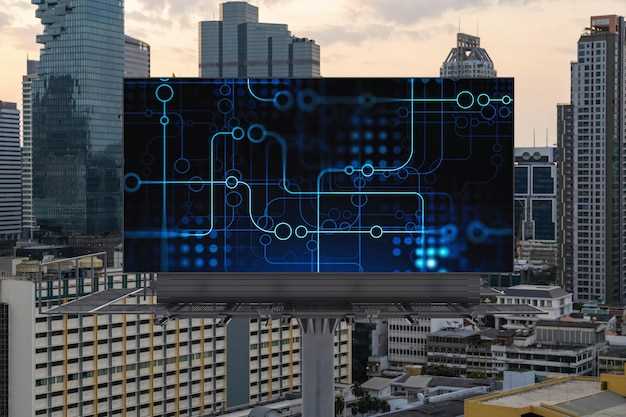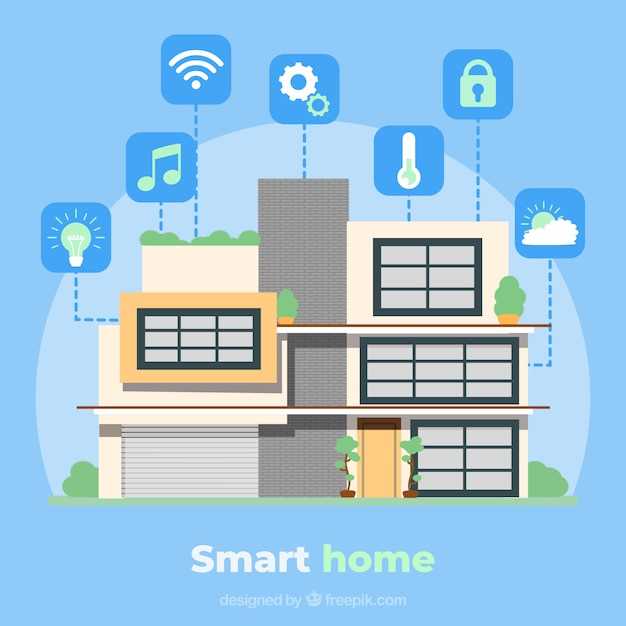
As the world continues to evolve and embrace technological advancements, the realm of facility management has witnessed a paradigm shift. In today’s fast-paced and dynamic environment, the efficient operation and management of buildings have become paramount. This has led to the emergence of a crucial component known as building automation systems.
Building automation systems, often referred to as BAS, play a pivotal role in optimizing the functionality and performance of modern facilities. These systems encompass a range of interconnected devices, sensors, and software that work in harmony to automate and streamline various building operations. By integrating and controlling critical functions such as heating, ventilation, air conditioning, lighting, and security, BAS ensures a seamless and efficient facility management experience.
One of the key advantages of building automation systems is their ability to enhance energy efficiency and sustainability. By intelligently monitoring and regulating energy consumption, BAS can significantly reduce wastage and optimize resource utilization. This not only leads to substantial cost savings but also contributes to a greener and more environmentally friendly approach to facility management.
Moreover, building automation systems empower facility managers with real-time data and insights. Through advanced analytics and reporting capabilities, BAS enables proactive decision-making and predictive maintenance. This allows for the early detection of potential issues, prompt troubleshooting, and the implementation of preventive measures, ultimately minimizing downtime and maximizing operational efficiency.
In conclusion, building automation systems have revolutionized the way modern facilities are managed and operated. With their ability to automate critical functions, optimize energy consumption, and provide valuable data-driven insights, BAS has become an indispensable tool for facility managers. As technology continues to advance, the role of building automation systems will only become more crucial in ensuring the seamless and sustainable operation of contemporary facilities.
Enhancing Energy Efficiency and Sustainability
In the pursuit of creating more environmentally friendly and economically viable buildings, the focus has shifted towards enhancing energy efficiency and promoting sustainability. This section explores the various strategies and technologies that can be employed to achieve these goals.
Optimizing energy consumption: One of the key aspects of enhancing energy efficiency is optimizing energy consumption within buildings. This involves implementing intelligent systems that can monitor and control energy usage in real-time. By analyzing data and making informed decisions, these systems can adjust lighting, heating, and cooling levels to minimize energy waste and ensure optimal comfort for occupants.
Integrating renewable energy sources: To further promote sustainability, integrating renewable energy sources is crucial. Buildings can harness solar power through the installation of solar panels, which can generate electricity to supplement or even replace traditional energy sources. Additionally, wind turbines and geothermal systems can be utilized to tap into alternative energy sources, reducing reliance on fossil fuels and decreasing carbon emissions.
Implementing smart building design: Smart building design plays a significant role in enhancing energy efficiency and sustainability. By incorporating features such as natural lighting, efficient insulation, and advanced ventilation systems, buildings can reduce energy consumption and create a healthier indoor environment. Furthermore, utilizing smart sensors and automated controls can optimize energy usage by adjusting lighting and HVAC systems based on occupancy and environmental conditions.
Promoting energy-conscious behavior: In addition to technological advancements, promoting energy-conscious behavior among occupants is essential. Educating building users about the importance of energy conservation and providing incentives for energy-saving practices can significantly contribute to overall energy efficiency. Simple actions such as turning off lights when not in use, utilizing natural daylight, and properly maintaining equipment can make a substantial difference in reducing energy consumption.
Monitoring and analyzing energy performance: To ensure continuous improvement, it is crucial to monitor and analyze the energy performance of buildings. By collecting data on energy usage, identifying patterns, and benchmarking against industry standards, facility managers can identify areas for improvement and implement targeted strategies to enhance energy efficiency and sustainability.
In conclusion, enhancing energy efficiency and sustainability in modern facilities requires a multifaceted approach. By optimizing energy consumption, integrating renewable energy sources, implementing smart building design, promoting energy-conscious behavior, and monitoring energy performance, buildings can become more environmentally friendly and economically sustainable.
Streamlining Operations and Maintenance
In the realm of modern facility management, the optimization of operations and maintenance processes plays a crucial role in ensuring the smooth functioning of building automation systems. By streamlining these essential tasks, facility managers can enhance efficiency, reduce costs, and improve overall performance.
Enhancing Efficiency through Automation
One key aspect of streamlining operations and maintenance is the integration of automation technologies. By leveraging intelligent systems and advanced algorithms, facility managers can automate routine tasks such as equipment monitoring, data collection, and performance analysis. This automation not only saves time but also eliminates the risk of human error, ensuring accurate and reliable results.
Implementing Predictive Maintenance Strategies

Another vital component of streamlining operations and maintenance is the adoption of predictive maintenance strategies. By utilizing data-driven insights and predictive analytics, facility managers can proactively identify potential equipment failures or maintenance needs. This proactive approach allows for timely interventions, reducing downtime and minimizing disruptions to building operations.
In conclusion, streamlining operations and maintenance in modern facilities is essential for optimizing the performance of building automation systems. Through the integration of automation technologies and the implementation of predictive maintenance strategies, facility managers can achieve enhanced efficiency, cost savings, and improved overall functionality.
Improving Occupant Comfort and Productivity

Enhancing the well-being and efficiency of individuals within a building environment is a crucial aspect of optimizing occupant comfort and productivity. By implementing advanced technological solutions, facilities can create a more conducive atmosphere that promotes a sense of satisfaction and enables individuals to perform at their best.
Creating a Pleasant Environment
One key element in improving occupant comfort is the ability to create a pleasant environment. By utilizing intelligent building automation systems, facilities can regulate temperature, lighting, and air quality to ensure optimal conditions. This not only enhances physical comfort but also contributes to a more positive and enjoyable atmosphere, fostering a sense of well-being and contentment among occupants.
Enhancing Productivity
Another significant benefit of building automation systems is their ability to enhance productivity. By automating routine tasks and streamlining processes, these systems free up valuable time and resources for individuals to focus on more critical tasks. Additionally, the integration of smart technologies allows for personalized control and customization, empowering occupants to create an environment that suits their specific needs and preferences, ultimately boosting their productivity levels.
In conclusion, the integration of building automation systems plays a vital role in improving occupant comfort and productivity. By creating a pleasant environment and enabling individuals to have greater control over their surroundings, these systems contribute to a more satisfied and efficient workforce, ultimately leading to enhanced overall performance within modern facilities.
Enhancing Safety and Security
In the realm of modern facilities, the imperative of ensuring safety and security is of paramount importance. This section delves into the crucial role played by building automation systems in bolstering safety measures and fortifying security protocols.
Advancing Safety Measures
Building automation systems offer a comprehensive approach to enhancing safety within facilities. By seamlessly integrating various safety devices and systems, such as fire alarms, smoke detectors, and emergency lighting, these systems provide real-time monitoring and rapid response capabilities. Through the use of advanced sensors and intelligent algorithms, potential hazards can be detected and addressed promptly, minimizing the risk of accidents and ensuring the well-being of occupants.
Fortifying Security Protocols
Building automation systems also play a vital role in strengthening security measures within modern facilities. By integrating access control systems, surveillance cameras, and intrusion detection systems, these systems provide a centralized platform for monitoring and managing security events. Through the use of advanced analytics and machine learning algorithms, suspicious activities can be identified and appropriate actions can be taken in a timely manner. This proactive approach to security helps deter potential threats and ensures a safe environment for occupants and assets.
In conclusion, building automation systems serve as indispensable tools in enhancing safety and security within modern facilities. By integrating various safety devices and systems, as well as fortifying security protocols, these systems provide a comprehensive solution that safeguards occupants and assets from potential risks and threats.
Optimizing Resource Allocation and Cost Savings
In today’s ever-evolving world, the efficient allocation of resources and cost savings are crucial factors for the success of modern facilities. By implementing advanced building automation systems, facility managers can optimize resource allocation and achieve significant cost savings.
Enhanced Resource Allocation
Building automation systems offer a comprehensive solution for managing and controlling various resources within a facility. These systems utilize advanced sensors and intelligent algorithms to monitor and analyze data related to energy consumption, water usage, and other resources. By gaining a deeper understanding of resource utilization patterns, facility managers can make informed decisions to optimize resource allocation.
For example, through real-time monitoring and analysis, building automation systems can identify areas of energy wastage or excessive water consumption. Facility managers can then take proactive measures to address these issues, such as adjusting HVAC settings, optimizing lighting schedules, or implementing water-saving measures. By optimizing resource allocation based on data-driven insights, facilities can reduce waste and improve overall operational efficiency.
Cost Savings through Efficiency
One of the primary benefits of optimizing resource allocation is the potential for significant cost savings. By identifying and addressing inefficiencies, facilities can reduce energy and water consumption, leading to lower utility bills. Additionally, optimizing resource allocation can minimize maintenance and repair costs by identifying and addressing issues before they escalate.
Building automation systems also enable predictive maintenance, where equipment performance is continuously monitored, and potential issues are detected early on. By addressing maintenance needs promptly, facilities can avoid costly breakdowns and prolong the lifespan of equipment. This proactive approach to maintenance not only saves money but also ensures uninterrupted operations and enhances occupant comfort.
| Benefits of Optimizing Resource Allocation and Cost Savings |
|---|
| 1. Reduced energy and water consumption |
| 2. Lower utility bills |
| 3. Minimized maintenance and repair costs |
| 4. Extended equipment lifespan |
| 5. Enhanced operational efficiency |
In conclusion, building automation systems play a vital role in optimizing resource allocation and achieving cost savings in modern facilities. By leveraging advanced technology and data-driven insights, facility managers can make informed decisions to reduce waste, improve efficiency, and ultimately save money. The benefits of optimizing resource allocation extend beyond financial savings, as it also contributes to sustainability efforts and enhances the overall performance of the facility.
Integrating with Smart Building Technologies for Future-Proofing
Incorporating smart building technologies into the infrastructure of modern facilities is essential for ensuring long-term adaptability and sustainability. By seamlessly integrating these advanced systems, businesses can future-proof their operations and stay ahead in an ever-evolving landscape.
Smart building technologies encompass a wide range of interconnected devices and systems that optimize energy efficiency, enhance occupant comfort, and streamline facility management. These technologies include intelligent sensors, automated controls, data analytics, and cloud-based platforms, among others.
By integrating with smart building technologies, facilities can achieve greater energy savings through real-time monitoring and control of lighting, HVAC, and other systems. This not only reduces operational costs but also minimizes environmental impact, contributing to a greener and more sustainable future.
Furthermore, the integration of smart building technologies enables facilities to enhance occupant comfort and productivity. Through advanced automation and personalized settings, occupants can enjoy optimal lighting, temperature, and air quality conditions, creating a more pleasant and conducive environment for work or leisure.
Another significant benefit of integrating with smart building technologies is the ability to streamline facility management processes. By centralizing data collection and analysis, facility managers can gain valuable insights into energy usage patterns, equipment performance, and maintenance needs. This empowers them to make informed decisions, proactively address issues, and optimize resource allocation.
Moreover, the integration of smart building technologies opens up opportunities for innovation and scalability. As technology continues to advance, facilities can easily adapt and incorporate new solutions without significant disruptions or costly retrofits. This flexibility ensures that businesses can stay at the forefront of industry trends and remain competitive in a rapidly changing market.
In conclusion, integrating with smart building technologies is crucial for future-proofing modern facilities. By harnessing the power of interconnected devices and systems, businesses can achieve energy efficiency, enhance occupant comfort, streamline facility management, and embrace innovation. Embracing these technologies is not only a strategic move but also a responsible choice towards a sustainable and resilient future.



